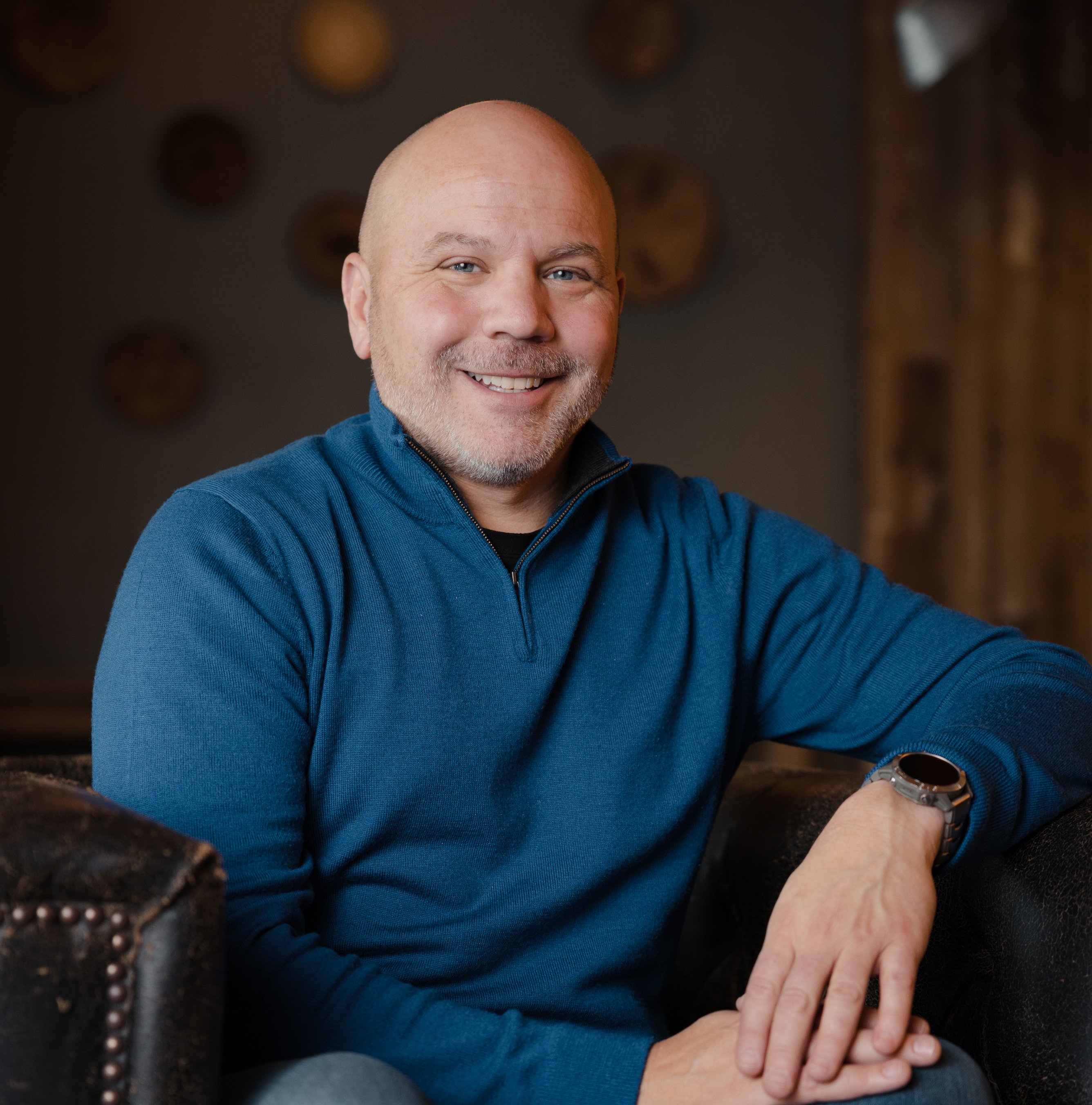Using EOS Rocks to Break Departmental Ceilings
If you're leading a team inside a company running on EOS®, you've probably heard a version of this complaint:
"We're doing great work in our department—but we're stuck waiting on [insert another team]."
Sound familiar?
That’s the ceiling you’re hitting. It’s not a lack of talent, hustle, or intent. It’s a misfire in cross-functional execution. And EOS Rocks, when done right, are your sledgehammer.
Align Rocks With the 1-Year Plan
When a company sets a 1-Year Plan, it identifies the most important things it must accomplish to stay on track toward the 3-Year Picture and 10-Year Target™. These are agreements based on the best information that we have at the time. As leaders our work is to understand our departments well enough such that we can align our activities to the advancement of the organization. This is where departmental rocks come in as part of the planning and execution process.
Departmental Rocks, then, should never live in a vacuum. In my experience rocks either fix something that is not working today. Advance us towards our stated goals or help us innovate on new opportunities like Artificial Intelligence in our business. If we can’t understand the purpose of the rock then we should question why are we doing it, especially now. The mistake many departments make is crafting Rocks that feel urgent locally but are disconnected globally. That’s how you get teams that are "busy" but not "productive." Teams working hard but not in sync.
Real alignment starts by asking: "If we succeed at this Rock, how will it help the company achieve our 1-Year Plan?" If we can’t see that then we need to ask how it helps the departments goals in their 1-Year Plan? These questions can transform the Rock-setting conversation. It pushes teams out of their silos and into strategic thinking. It moves them from asking "What should we do this quarter?" to "What does the business need us to do this quarter?" And when that mindset shift happens, the Rocks that emerge are not just more aligned—they’re more likely to get done. Why? Because the team sees the purpose behind the priority. They understand the "why," not just the "what."
Force the "Who, What, By When" Early
In EOS, clarity is a core principle—and it starts with Rocks. Every Rock must answer three questions: Who owns it? What exactly is being delivered? And when will it be done? These aren’t administrative details. They’re the foundation of accountability.
The "Who" matters because ownership drives action. A Rock without a clear owner is a Rock that nobody is responsible for. And when the Rock falls behind, there’s no one to raise their hand, ask for help, or push it forward. Ownership also doesn’t mean doing all the work. It means driving the outcome. That distinction allows for collaboration while still preserving accountability.
The "What" matters because ambiguity is the enemy of execution. A Rock must be crystal clear. If it says, "Improve onboarding," that could mean a hundred different things to a hundred different people. Instead, define the outcome: "Document and publish a 5-step onboarding checklist in the company wiki." That’s specific. That’s actionable. That’s measurable.
The "By When" matters because it creates urgency. Rocks live inside a 90-day world. Without a specific due date, the Rock is at the mercy of "when we get to it." That’s a surefire way to stay stuck. A clear deadline brings focus and rhythm. It also provides the basis for checking in during weekly Level 10 Meetings™.
Most importantly, this trifecta of clarity turns Rocks into commitments. And when those commitments are made in the open, shared across teams, and reviewed weekly, it becomes nearly impossible for departmental ceilings to survive. Why? Because now everyone knows who’s responsible for what, when it’s due, and how it supports the greater plan. That’s real alignment. And that’s how ceilings come down.
Use Rocks to Preempt Dependencies
Dependencies are where most departmental ceilings show up—often not because teams don’t want to collaborate, but because they failed to see the dependency early enough. One of the hidden superpowers of Rocks is their ability to surface those dependencies before they become roadblocks.
When setting Rocks, a great question to ask is, "What does this Rock depend on to succeed?" And then, "Who else is involved in making that happen?" If the answers involve another team, then you have the opportunity to bring them into the Rock early as a collaborator, contributor, or even co-owner. This proactive approach turns potential blockers into strategic partners.
Preempting dependencies also means structuring Rocks to account for handoffs and sequencing. If Marketing needs input from Product before they can launch a campaign, then that sequence needs to be built into the Rock itself. Not as a vague hope, but as a milestone with a date and a name next to it. Too many Rocks fail because the sequencing was assumed, not scheduled. Preempting these misfires requires intentional coordination.
One technique I coach leadership teams on is to review each other’s Rocks before they’re finalized. During this process, each leader answers: "Does anything in your Rock rely on me or my team?" This creates a safe space to identify dependencies without blame. And when the team has visibility into each other's Rocks, it naturally invites offers of help and clarifies expectations.
This isn't just about improving execution. It builds trust. When teams see that their colleagues are thinking about the impact across departments, silos break down. That’s what turns Rocks from isolated efforts into company-wide commitments. And that’s how you start to build a culture that anticipates friction points and solves them upstream—before the ceiling appears.
Incorporate Rocks Into Level 10 Meetings™
Even the best-set Rocks won’t break ceilings if they aren’t actively managed. That’s why Level 10 Meetings™ are essential to making Rocks work. These weekly meetings are where Rocks go from being plans on paper to actual progress drivers.
Every Rock should have a presence on the Level 10 Meeting Scorecard. Each week, the owner reports it as "On Track" or "Off Track." This simple status update creates transparency and rhythm. But more importantly, it gives the team a regular opportunity to ask, "What’s getting in the way?"
When a Rock is marked Off Track, it gets moved to the Issues List. This is where the real work happens. Using the IDS® (Identify, Discuss, Solve) process, the team digs in. Why is this Rock behind? Is it a resourcing issue? A decision that hasn’t been made? A cross-functional dependency that hasn’t been fulfilled?
The weekly cadence of the Level 10 Meeting means these issues don’t linger. They're raised, addressed, and resolved—week after week. And this rhythm helps prevent small misalignments from becoming major blockers.
Even Rocks that are On Track benefit from the visibility. Seeing that other teams are making consistent progress creates confidence and accountability across the board. It also creates opportunities for teams to offer support, share updates, or adjust priorities in real time.
That shift—from static planning to dynamic execution—is what keeps momentum alive. And it's one of the most powerful ways to ensure that departmental ceilings are broken not just once, but repeatedly, as your organization grows.
Case in Point: Ops + Sales
The tension is real and often not well understood between Sales and Operations. One client story comes to mind where they were in a good market moment and their funnel was strong and growing. However, Operations were working to build repeatable, scalable, cost effective processes to support the coming funnel. These efforts were inside the Operations teams Rocks but the Sales organization was disconnected from and not clearly communicating. When we arrived at the end of the quarter and we found several operations rocks not done and they weren’t IDS’d during the quarter we were in a hard place. Communication across an organization is forever work and departmental rocks can help us better understand what is being worked on and when it will be delivered such that we stay aligned. The good news is we get to play the game again next quarter and the team improved drastically quarter over quarter.
Breaking Through Departmental Ceilings
Departmental ceilings are inevitable in growing organizations. They aren’t signs of failure—they’re signs that you’ve reached the limit of what siloed execution can achieve. But they don’t have to stall progress. EOS Rocks, when set and managed correctly, are the tool to break through.
The key is discipline. Align Rocks with the 1-Year Plan so priority serves the larger Vision. Reinforce clarity with "Who, What, By When" so Rocks are commitments, not suggestions. Use Rocks to preempt dependencies, surfacing them before they become problems. And bring them into Level 10 Meetings every week, so they stay alive, adaptive, and accountable.
When you treat Rocks this way, you don’t just solve for one quarter—you build the muscle your organization needs to continually break through ceilings. And that’s how you move from being a company that works in silos to one that grows as a unified, aligned, and unstoppable team.
How Ninety Helps Break Departmental Ceilings
This is where Ninety becomes a game-changer. The Ninety platform is built to take the discipline of EOS and make it visible, trackable, and actionable across every department. Rocks live in the software—owned by individuals, connected to company goals, and updated weekly. Dependencies don’t get lost because everyone can see them in real time. Level 10 Meetings are powered by Ninety’s agenda tools, ensuring every Rock and Issue is surfaced and solved. Instead of juggling spreadsheets, slides, and scattered notes, teams operate from one source of truth. That clarity helps leadership teams—and their departments—stay focused, accountable, and aligned. In short, Ninety equips you with the structure and rhythm you need to break through departmental ceilings quarter after quarter.
Ready to Gain Traction?
If your leadership team is ready to stop spinning in silos and start breaking through departmental ceilings, Ninety can help. Sign up today for a free trial and see how Ninety makes EOS® tools—like Rocks, Scorecards, and Level 10 Meetings™—easy to use, track, and follow. Give your team the clarity, accountability, and rhythm it needs to gain traction. Ready to try it out? Sign up for a free 30-day trial of Ninety today!




.jpg?width=500&name=large_Traction%C2%AE_Gap_EOS_Blog_Header_1920x1080%20(1).jpg)